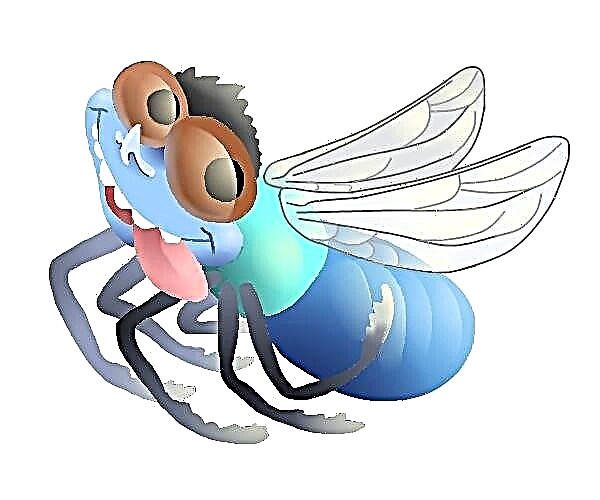
Recognizing the first signs of measles infection in babies is a difficult task for every parent. The disease often begins in a very nonspecific manner. In infants, the course of the infection can be very severe and even life-threatening. Determining the symptoms at the initial stage is a very important condition for further monitoring the child's condition and tracking the dynamics of the condition.


What it is?
The appearance of red skin rashes is caused by the measles virus. The baby can get sick by airborne droplets. Measles is a very volatile disease. A healthy baby quickly becomes infected from a sick child. The peak incidence of measles occurs at the age of 3-7 years. However, a measles rash can also occur in babies.
Dr. Komarovsky believes that the risk of contracting measles increases significantly in babies who attend kindergartens.

The fact is that viruses perfectly retain their viability in the environment for a long time. Measles outbreaks tend to be more common in kindergartens, where children are kept for quite a long time during the day.
The virus, getting on the mucous membranes, and then into the blood, multiplies rapidly and penetrates into all internal organs. Most often, harmful microorganisms damage the cells of the immune system, as a result of which severe symptoms of intoxication and the main skin manifestations of the disease appear.


How can you get infected?
Most often, babies become infected from each other. A sick child is highly contagious. Measles is one of the most highly contagious diseases.
Usually, the incubation period from the moment the pathogen enters the child's body for the first time until the onset of symptoms of the disease lasts 1-2 weeks.
During the incubation period, the baby's condition practically does not change. The baby looks normal with no signs of infection. In some cases, some children become somewhat sleepy, play less with toys, and are more often naughty over trifles. Some babies may have a slight decrease in appetite. At this time, the disease does not manifest itself in any way.


What are the symptoms at the onset of the disease?
The most characteristic manifestation of measles is the appearance of skin rashes.

Usually spots appear by the second week after contact with the pathogen. The disease proceeds with severe symptoms of intoxication and greatly disrupts the child's well-being.

The most specific early manifestations of measles infection are:
High body temperature. In some cases, it grows rapidly. For the first few days of illness, the temperature rises to 38-39 degrees. The conjunctiva of the eyes turns red. With a severe course of the disease, there may even be a leakage of pus from the damaged eye.
Intoxication symptoms and catarrhal manifestations. Measles viruses primarily damage the mucous membranes, so babies can often have a cough and runny nose. Discharge from the nose is usually mucous. The cough may be dry. Sputum is released only when a secondary bacterial infection is attached.
Characteristic spots in the mouth. Usually these elements are located against the background of a bright red, hyperemic mucosa. The spots are white with a reddish rim around the periphery. They are called elements of Belsky-Koplik-Filatov. Most often they occur on the inner surface of the cheeks. Another favorite location is near the tooth sockets. Reddish or pink spots may also appear on the palatine surfaces.
Stepwise course of the disease. As a rule, by 3-4 days, intoxication gradually decreases. However, when a rash occurs, intoxication symptoms may increase again. The appearance of skin rashes practically does not bring relief to the baby.
The onset of a rash. It is often represented by multiple elements of the same type. They reach 2.5-3 mm in diameter. Measles is characterized by a descending spread of skin rashes. More papules are noted on the face, as well as on the neck and upper shoulder girdle. Gradually, the rash begins to spread throughout the body. Papules appear on the legs and back around the end of the first day. Gradually, loose elements begin to change color. They become paler.
With a severe course of the disease - the formation of small ecchymosis. These are small bruises that most often occur on the lower limbs. This is how various hemorrhages appear, which occur as a result of the toxic effect of viral toxins on the capillaries of the skin. In some cases, these changes can occur on the oral mucosa or even on the conjunctiva of the eyes. As a rule, with such a severe course, severe swelling of the face or neck appears.
Gradual fading of the rash and normalization of the condition. With a favorable course of the disease, the loose elements disappear by 4-5 days of the disease. In places of former papules, areas of hyperpigmentation or slight peeling may remain. They are often dark red with a purple tint. After the rash disappears, the body temperature is normalized and the child's condition improves. On average, the rash lasts 5-6 days on the body and gradually disappears.
Disappearance of hyperpigmentation and recovery of the baby... Usually there are several stages. At first, the purple areas become less brightly colored. This process usually takes 3-4 days. Large scales may appear at the site of former hyperpigmentation. At first, they poorly exfoliate from the skin surface. After a week, they quickly disappear without the use of additional funds.
In infants, bacterial complications often join. They are manifested by suppuration from the eyes, as well as secondary infection of papular rashes on the skin. In such cases, a consultation with a pediatrician and the appointment of antibacterial drugs are required.
Prevention
All preventive measures for measles can be divided:
Non-specific
These include adherence to the rules of personal hygiene, which helps to prevent contact-household infection. Every kid must use their own dishes. All the child's cutlery must be washed in hot water using special detergents. It is better to dry dishes naturally. If towels are used, they must also be washed and ironed with a hot iron.


During measles epidemics, it is better for babies to stay at home and not attend kindergarten. Quarantine is very important. It usually lasts 7-10 days. This will help prevent mass infections in babies.
Specific
Vaccination of children against measles plays an important role in the prevention of a dangerous disease. In Russia, babies are given mandatory vaccinations against measles, rubella and mumps. Such vaccination can effectively protect the child from the severe course of the disease and prevent massive outbreaks of the disease. Vaccinations must be carried out necessarily before the baby enters a preschool educational institution. Babies, as a rule, tolerate vaccination well. For children with immunodeficiencies, prior consultation with an immunologist is required.

It is quite difficult to suspect measles at a very early stage. However, only such an early detection of the disease can quickly provide the baby with all the necessary assistance and even prevent massive infection.
For more details see the program of Dr. Kormarovsky.



